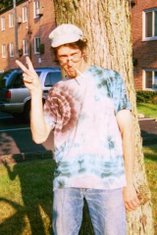Marvel Comics' Mighty Joe Robertson: An Overdue Appreciation
Much has been made of Marvel's Black Panther, introduced by Stan Lee and Jack Kirby in Fantastic Four #52, being the comics' first Black super-hero. (He is sometimes referred to as the first African American super-hero, though this is incorrect. The Panther was T'Challa, a prince of the fictional African land of Wakanda, and not any kind of American. The first African-American hero is most likely The Falcon, introduced by Lee in Captain America and artist Gene Colan some years later) I believe, however, that the most important Black character introduced during Marvel's Silver Age was, in fact, Joe Robertson, a supporting character in The Amazing Spider-Man, where he served as city editor of The Daily Bugle, the fictitious newspaper for which Spidey took photos in his Peter Parker identity.
No fanfare or alliterative cover blurbs accompanied the character's debut in, coincidentally I'm sure, ASM #52. His first appearance in that issue lasted all of two panels and he was not even formally introduced to Peter Parker until two issues later. Following this rather unceremonious, to say the least, introduction, "Robbie," as he was known around the newsroom, soon became a mainstay of the wall-crawler's supporting cast. he was most often portrayed as the voice of reason gently countering Bugle publisher J. Jonah Jameson's frequent anti-Spider-Man rants.
You may be asking yourself what's significant about such a fairly minor character. If he were introduced in 2007, the answer would be "nothing." But you must remember that the character came on the scene in 1967. I was a time when Black characters in any entertainment were a rarity and positive portrayals of such characters nearly nonexistant. I remember watching a show on the cable channel TV Land a while back in stars of Julia, a sitcom that aired at about the time we're discussing here, reported recieving death threats because their show dared to feature an African American woman as its title character.
Thus, when you consider the media landscape into which Joe "Robbie" Robertson quietly stepped, you can begin to see my point. Here, almost unnoticed in the putative "children's" medium of super-hero comic books, Lee and artist John Romita were presenting to their youthful readers one of the few positive characterizations of an African American male available in any medium. He was no criminal or junkie, as Black men were most often depicted, if depicted at all, in the media of the day. Rather, he was an educated professional, avuncular family man. His job at the Bugle put him in a position of authority over white people, including the comic's titular star, which believe was a first for a Black character in any medium. Moreover, Robbie is treated as a friend, confidante and, most importantly, equal by Jameson, the newspaper's rich, white publisher.
Unfortunately, when histories or analyses of the Black characters in comics are written, Joe Robertson generally goes unmentioned. Much like the way character himself is portrayed in the comics, Robbie's impact on the medium was quiet but powerful.

1 comment:
Aside from the old black characters in marvel ie black panther, luke cage, storm and "Robbie". Marvel seems to dislike regular black characters. Especially in their x-men titles. in the last decade Prodigy, Synch, Bishop, Maggot and Cecilia Reyes have either died, disappeared or used as a crazy plot device (see messiah complex actions of Bishop).
Post a Comment